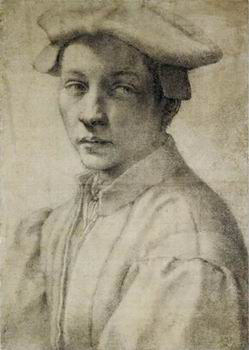
I can't say I'm the greatest fan of much of Michelangelo's work with paint- grand scale kitsch as it often is; see above. Even at best his figures clearly would prefer to be incarnate in the form of sculpture rather than the painted image, and it no surprise that sculpture was by far Michelangelo's preferred medium, given his passion for monumentally physical figures of not particularly subtle or vivid inner lives. "All so tediously, relentlessly, bloody epic," as someone famous and brilliant might have once said. The Charlton Heston of Western art perhaps? And to be honest, the figures in the famous Sistine Chapel below seem to me to be simply peeled off and stuck on to the scene. As a display of skill in figurative technique it may be outstanding, and the sheer scale of the accomplishment overpowering, but as a unified painting it's dreadful.

Compare to the previously posted Burial of the Count of Orgaz by El Greco, for a similarly densely populated painting, but the work of an artist working in his natural medium. Greco is recorded as saying of Michelangeo, "A good man, but he can't paint."

And below, Titian's Rape of Europa, whose presence I justify with the slightly dubious excuse of showing a painting as a whole unified work of art as opposed to an excuse to gather a group of majestically proportioned humans together under the one roof, or on the one ceiling as the case may be.

Portrait of Andrea Quaratesi shows Michelangelo working in a medium more suited to his genius and character, ie drawing as opposed to paint, where it is a relief to see the humbler pretensions of pencil and chalk allow his admittedly and thankfully humbler subject to breathe with real inner life.


No comments:
Post a Comment